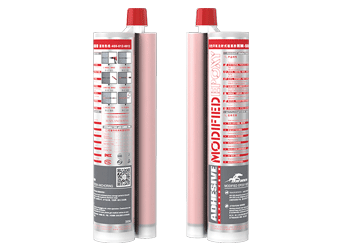Solutions
Horse Construction offers full range of structural strengthening materials with technical supports, documentation supports, products supports, project supports.
Selection and application of structural strengthening reinforcement methods

Structural strengthening reinforcement is a method of enhancing, partially replacing, or adjusting its internal force on the basis of the original building, so as to improve the safety, applicability and durability of the building. When strengthening the building, it is necessary to conduct on-site inspection and reasonable analysis of the damage and damage of the building, and use scientific methods to strengthen the building structure. The reinforcement effects produced by different reinforcement methods are quite different, and their economy, applicability, post-maintenance cost and impact on the building space are also different.
Features of structural strengthening reinforcement
structural strengthening reinforcement is the transformation of the inherent building structure. Therefore, structural strengthening reinforcement is restricted by the current status of the original structure (such as section form, section size, etc.). Generally, the structure has been subjected to loads for a certain period of time before reinforcement. The reinforcement design should fully consider the influence of the historical stress of the structure on the structural mechanical performance. During the construction period, effective unloading measures need to be taken to ensure the stability during the construction period. In addition, during the concrete reinforcement construction, good construction conditions and the feasibility of the construction plan should be ensured, while ensuring that the construction environment can effectively ensure the effectiveness of the concrete reinforcement. In order to improve the overall quality of construction, improve the safety factor in the construction process, and ensure that the reinforcement construction can be implemented smoothly.
Commonly used structural strengthening reinforcement methods
Enlarged section reinforcement method
The method of increasing section is to increase the bearing capacity and rigidity of structural members by increasing the cross-sectional area of the original member and adding reinforcement. This kind of reinforcement method has good effect, economy, wide application range, low maintenance cost in later period, and has more engineering use experience, and has better applicability. The disadvantages of this method are that the construction operation is relatively complicated, and the workload of on-site wet work is relatively large, and the maintenance period required is relatively long. The increase of the cross section also has a certain impact on the beauty of the components and the clear height of the building. Therefore, when selecting the method of increasing section reinforcement, it is necessary to consider factors such as reinforcement effect, cost, operating environment and construction period, and comprehensively analyze the technical feasibility.
Encased steel reinforcement method
The wrapped steel method is to wrap the steel or steel plate around the reinforced concrete member to achieve a common force, thereby improving the bearing capacity and rigidity of the structural member. The method is reliable in force transmission, convenient in construction, short in construction period, and has little impact on the building headroom. However, the amount of steel used is large, and the exposed steel components should also be treated with fire prevention and anti-corrosion, and subsequent maintenance is more complicated. According to whether the outer steel and the original member are bonded, it can be divided into dry and wet outer steel reinforcement schemes. Among them, the dry outer steel reinforcement method is mainly applied to the reinforcement of reinforced concrete columns and outer steel. There is no connection between them, or although the cement mortar is filled, the reliable conduction force of the interface cannot be guaranteed. The reinforcement method of the wet-clad steel profile is to use structural adhesive bonding to make sure that there is a strong connection between the profile steel and the original structural member, thereby greatly improving the bearing effect.
Externally bonding carbon fiber material reinforcement method
The concrete structure is reinforced by pasting carbon fiber materials, which can also effectively improve the bearing capacity and stiffness of the concrete structure. Compared with other materials, carbon fiber materials have higher tensile strength, and studies have shown that the tensile strength of carbon fiber materials is 8 times that of ordinary steel, and even some high-quality materials can reach 10 times. The carbon fiber material itself also has high-quality anti-fatigue properties. In the current engineering environment where concrete structures are widely used, reinforcement with carbon fiber materials can not only prevent fatigue problems, but also ensure the integrity of concrete structures. At the same time, carbon fiber materials are very suitable for use in high acid, alkali, salt and atmospheric corrosion environments. However, carbon fiber materials have poor aging resistance and are not fire resistant. The long-term use temperature should not be 60 degrees Celsius and the relative humidity should not exceed 70%. Special adhesives should be used for high temperature, high humidity, and outdoor conditions where there are special environmental protection measures and direct exposure to sunlight.
In summary, the selection of structural strengthening reinforcement schemes and construction control are very important, and they are the key to ensuring building safety, economic applicability and durability. According to the actual characteristics of different projects, the best and most economical reinforcement methods are adopted to ensure the quality of structural strengthening reinforcement. At the same time, with the rapid development of the current construction industry, new construction technologies and new materials continue to emerge, and new reinforcement technologies are constantly being put into application. On the basis of being familiar with the existing reinforcement technology, designers should continue to learn new technologies to promote the development and application of new reinforcement technologies.
You can find anything here you are in need of, have a trust trying on these products, you will find the big difference after that.

High strength carbon fiber reinforced polymer (CFRP) strip / laminate / plate for structural strengthening and concrete repair

High strength, unidirectional carbon fiber sheet pre-saturated to form a carbon fiber reinforced polymer (CFRP) sheet used to strengthen structural concrete elements.

Two-components modified epoxy resin adhesive, with high quality plastic tube, double cartridge package for anchoring